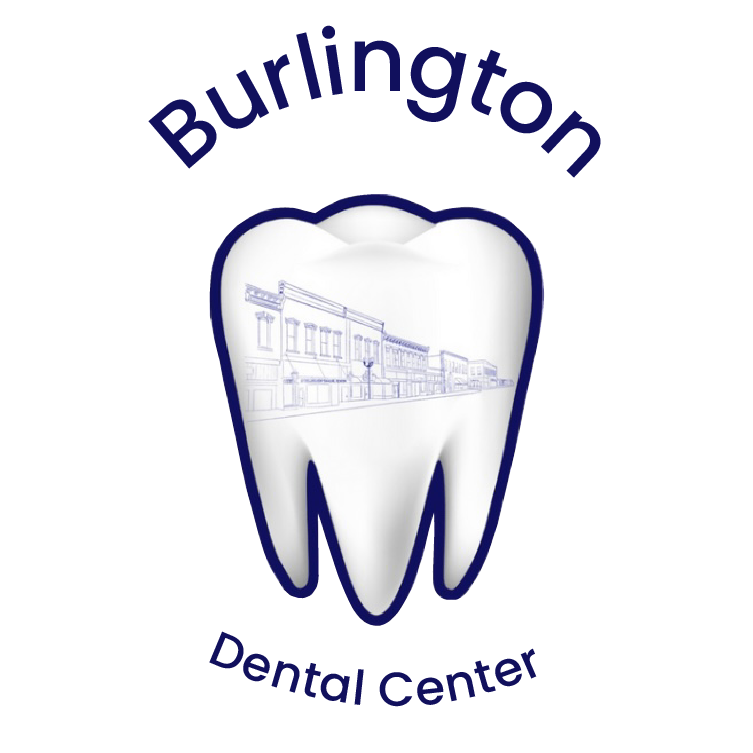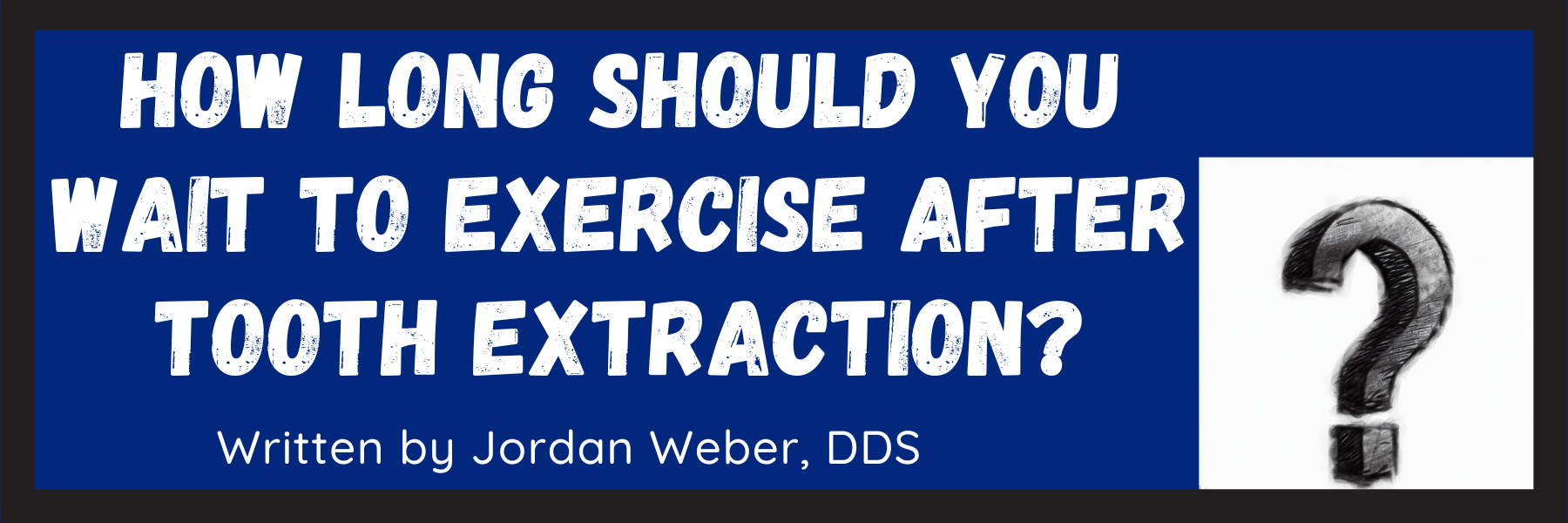A tooth extraction is often necessary for maintaining oral health and addressing dental issues. While the process is quite routine, it's crucial for patients to understand the importance of post-procedure care, especially when it comes to physical activities like exercise.
Here, we'll explore the recommended waiting period before resuming exercise after undergoing a tooth extraction, ensuring a smooth and complication-free recovery.
Quick Answer: How Long Should I Wait to Exercise After a Tooth Extraction?
After a tooth extraction, it's generally recommended to wait at least 48 to 72 hours before resuming any form of exercise. This waiting period allows the initial healing process to begin and reduces the risk of complications like dry socket.
Even if you wait the necessary 2-3 days, you should be careful not to do strenuous exercise immediately. In the first week after an extraction, keep the intensity low and be careful not to push it too hard.
The exact timeline to resume workouts can vary depending on individual factors, such as the complexity of the extraction and your overall health — so be sure to ask your dentist or surgeon for his/her recommendations.
Understanding Tooth Extraction
Tooth extraction involves the removal of a tooth from its socket in the jawbone and can be categorized into two types: simple and surgical.
A simple extraction is performed on a tooth that is visible in the mouth, usually under local anesthesia, and is typically straightforward.
Surgical extractions, on the other hand, are more complex and are used for teeth that are not easily accessible, such as impacted wisdom teeth or teeth that are broken at the gumline.
Reasons for tooth extraction vary, including severe tooth decay, overcrowding, and impacted teeth, all of which can lead to significant dental health issues if not addressed.
Importance of Recovery Time
After a tooth extraction, giving your body enough time to heal is essential.
Resuming strenuous activities like exercise too soon can lead to complications, such as dry socket — a painful condition where the blood clot at the extraction site is dislodged or dissolves before the wound has healed.
This can expose the underlying bone and nerves, leading to severe pain and a delay in the healing process.
Therefore, understanding and adhering to the recommended recovery time is not only crucial for avoiding such complications but also for ensuring a swift and smooth healing process.
Guidelines for Post-Extraction Activities
After a tooth extraction, it's generally advised to wait at least 48 to 72 hours before engaging in any form of exercise. This waiting period allows the initial healing process to begin and minimizes the risk of complications.
The intensity and type of exercise play a crucial role in the healing process.
High-intensity activities, such as weightlifting or vigorous cardio, can increase blood pressure and potentially dislodge the blood clot at the extraction site, delaying healing.
Therefore, it's important to start with low-impact exercises and gradually increase intensity based on your comfort and healing progress.
Specific Considerations for Exercise
When resuming exercise, it's advisable to begin with activities that are less strenuous, such as walking or gentle yoga.
These types of exercises are less likely to disrupt the healing process.
It's essential to listen to your body during this period and watch for any signs of discomfort, bleeding, or swelling, which could indicate that you're pushing yourself too hard.
Avoid strenuous activities like running, swimming, or heavy lifting, as these can increase the risk of complications. Gradually reintroduce more demanding exercises as your recovery progresses and you feel more comfortable.
Factors Influencing Recovery Time
Recovery time after a tooth extraction can vary based on several individual factors.
Age, overall health, and the complexity of the extraction procedure can all influence how quickly you heal.
Younger patients and those in good health typically recover faster, while those with underlying health conditions or who have had a more complex extraction may require a longer recovery period.
It's also important to remember that personal healing rates can differ, so following your dentist's specific recommendations and paying attention to how your body responds during recovery is crucial for a safe return to physical activities.
Tips for a Smooth Recovery
To ensure a smooth recovery after a tooth extraction, it's essential to follow a few key guidelines.
Proper oral hygiene, including gentle rinsing with salt water, can prevent infection and promote healing.
Modifying your diet to include soft, non-chewy foods can prevent irritation of the extraction site.
It's also important to rest adequately, especially in the first 24 to 48 hours post-extraction.
To stay active without affecting the healing process, opt for gentle walks or stretching exercises that do not involve jarring movements or high impact.
Stay hydrated during the recovery process.
Additionally, avoid smoking and drinking alcohol, as they can hinder the healing process.
When to Seek Medical Advice
Certain symptoms may indicate complications that require immediate medical attention. If you experience excessive or continuous bleeding, severe pain that doesn't subside with medication, or signs of infection (such as fever, severe swelling, or discharge from the extraction site), contact your dentist immediately.
Additionally, if you have any concerns or unusual symptoms during your recovery, it's important to seek advice from your dental professional. They can provide guidance and, if necessary, adjust your treatment plan or provide post-operative treatment.
Final Thoughts
Waiting an appropriate amount of time before resuming exercise after a tooth extraction is crucial for a safe and successful recovery. While the general recommendation is to wait at least 48 to 72 hours, individual factors such as the complexity of the extraction and your overall health can affect this timeline.
Adhering to medical advice, practicing good oral hygiene, and modifying your exercise routine during the recovery period are key to a complication-free healing process. Remember, prioritizing your oral health and following your dentist's recommendations will ensure a faster and smoother recovery.
FAQs
How long after tooth extraction can I workout?
It's advisable to wait at least 48 to 72 hours before engaging in any form of workout. Listen to your body and start with low-impact exercises, gradually increasing intensity as you feel comfortable.
How long after tooth extraction can I resume normal activities?
You can resume normal activities within 48 to 72 hours, but avoid strenuous physical activities for at least a week to prevent complications.
When is dry socket no longer a risk?
The risk of dry socket significantly decreases after the first week following extraction, as the healing process progresses and the blood clot stabilizes.
How many days should you rest after tooth extraction?
Rest for at least 24 to 48 hours post-extraction. After that, you can gradually return to normal activities, being mindful of your comfort level and healing progress.
What exercises should be avoided after tooth extraction?
Avoid high-impact, strenuous exercises like weightlifting, running, or any activity that involves vigorous movement or jarring for at least a week after extraction.
Can I go to the gym a week after tooth extraction?
Yes, you can generally go to the gym a week after tooth extraction, but start with light to moderate exercises and avoid strenuous activities that could disrupt the healing process.
* Though the author of this post is a licensed dentist in the state of Kansas, this information is provided for informational and educational purposes only. Please use your best judgment and contact emergency medical services in the event of an emergency.




